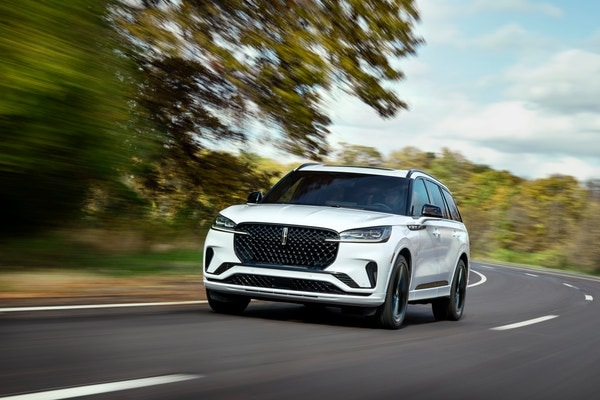Used 2017 Lincoln Navigator Select SUV Review
Consumer reviews
There are no consumer reviews for the 2017 Lincoln Navigator Select SUV.
Edmunds Summary Review of the 2017 Lincoln Navigator Select SUV
Pros & Cons
- Pro:Serene ride over any kind of road surface
- Pro:Lots of cargo room in both the standard and extended length versions
- Pro:Easy-to-use tech interface
- Pro:Substantial towing capacity allow it to handle large trailers
- Con:Some of the cabin materials look and feel cheap for a vehicle in this price range
- Con:Doesn't offer some of the advanced safety features available on competitors
Full Edmunds Review: 2017 Lincoln Navigator SUV
Driving
The 2017 Lincoln Navigator is a quiet, smooth and pleasant SUV to drive on the highway. Its turbocharged V6 provides plenty of power for swift acceleration, towing and maintaining speed on long uphill grades. We also like the way it goes around turns. Though undeniably heavy, it certainly feels more nimble than the Cadillac Escalade, and its independent rear suspension and optional adaptive suspension dampers combine for an excellent ride on the open road. Get the Navigator off the highway, though, and its appeal dims. There's just no getting around its massive size, which makes it a handful to maneuver and park in crowded cities.
Interior
From a strictly viewed-not-touched perspective, the 2017 Lincoln Navigator is welcoming and classy. Even the seats and high-quality leather upholstery continue the narrative that the Lincoln is a truly luxurious vehicle. Unfortunately, there are multiple hard, low-quality plastics that you come in contact with quite a bit in the cabin. Many of the knobs, trim pieces and instrument stalks feel like they've come right out of the Navigator's less-expensive sibling, the Ford Expedition. Depending on your expectations that can detract from the luxury experience a bit.
The center console, with Sync 3 front and center, offers a clean, logical layout for navigation, audio, phone and climate controls. There is a learning curve with Sync, but the new system is designed similarly to a smartphone, using gestures such as pinch-to-zoom or swipes. Once you connect your phone it can access your weather, music and other integrated smartphone apps. Unfortunately, Lincoln doesn't offer integrated systems in the Navigator such as Apple CarPlay or Android Auto yet.
When it comes to sheer size and how it translates to interior space, the Navigator is almost unrivaled. Passengers in the standard first- and second-row captain's chairs enjoy comfortable accommodations with plenty of room to stretch out. Even in the standard-wheelbase version, the third row feels remarkably spacious. The captain's chairs in the second row and abundant headroom help with the awkward climb to the third row. And then there's the cargo space.
Easing cargo-loading chores is the standard power-folding third-row seat that folds flat into the floor with the touch of a button, and returns upright just as effortlessly. Behind the third row in the standard-length Navigator, there is 18.1 cubic feet of space. Fold the second and third row down and suddenly that figure bulges to 103 cubes. The extended Navigator L has more than 42 cubic feet of cargo space behind the third row and an expansive 128 cubic feet when you fold the second and third row. The closest competitor is the Escalade ESV, with its 120 cubes of cargo.
Edmunds Insurance Estimator
The Edmunds TCO® estimated monthly insurance payment for a 2017 Lincoln Navigator in Ohio is:
not available

